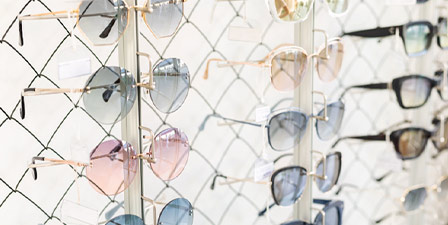By Linda Conlin, Pro to Pro Managing Editor

It’s been said that laughter is the best medicine, and the overall health benefits of laughter are known. Laughter enhances your intake of oxygen-rich air, stimulates your heart, lungs, and muscles, and increases the endorphins that are released by your brain. What’s more, part or a branch of the nerve that controls facial expression in laughing also acts on the lacrimal gland involved in reflex tearing, which is a reason you can cry laughing. A recent study has shown that laughter may be as effective as eye drops in improving symptoms of dry eye disease, and the researchers suggest that laughter exercise could be an initial treatment for relieving symptoms of dry eye disease. (BMJ 2024; 386 doi: https://doi.org/10.1136/bmj-2024-080474, Published 11 September 2024)
The study was conducted with 299 participants over six months at Zhongshan Ophthalmic Center, Sun Yat-sen University, China. Participants were people with symptomatic dry eye disease (DED) aged 18-45 years with ocular surface disease index scores ranging from 18 to 80 (normal OSDI is 0-12) and tear film break-up time of eight seconds or less (normal TBUT is 10-35). Half of the participants received laughter exercise and half used artificial tears (0.1% sodium hyaluronic acid eyedrop, control group, an active ingredient in artificial tears for treatment of DED) four times daily for eight weeks. The laughter exercise group viewed an instructional video, and participants were instructed to vocalize the phrases, “Hee hee hee, hah hah hah, cheese cheese cheese, cheek cheek cheek, hah hah hah hah hah hah,” 30 times per five-minute session, four times a day. (It’s said that laughter is contagious, so perhaps just observing the exercise could invoke a laugh!) Investigators assessing study outcomes were unaware of group assignments. Both groups tracked their participation through a ‘laughing face’ app. Participants were assessed at one week, two weeks, four weeks, six weeks, and eight weeks, and again at 10 and 12 weeks, after discontinuing the drops or exercises.
In pilot studies before the randomized controlled trial, researchers observed that laughter could immediately improve tear film stability and lipid layer thickness. Additionally, in a small-scale study, they found that laughter exercise could alleviate symptoms of dry eye disease. For this study, the decrease in ocular surface disease index scores was statistically significant in both groups at eight weeks compared with baseline. However, the laughter exercise group had a persistent and significantly greater decrease in the ocular surface disease index score than did the control group at 12 weeks, and after eight weeks of treatments, the laughter exercise group had a more significant improvement in non-invasive tear break up time than did the control group.
Researchers concluded that laughter exercise was “non-inferior” to 0.1% sodium hyaluronic acid in alleviating dry eye disease symptoms. Additionally, they found that laughter exercise appeared to improve tear film stability and the meibomian gland function. They also observed high cumulative compliance rates in the laughter exercise group. Researchers conclude that as a safe, environmentally friendly, and low-cost intervention, laughter exercise could serve as a first line, home based treatment for people with symptomatic dry eye disease.












